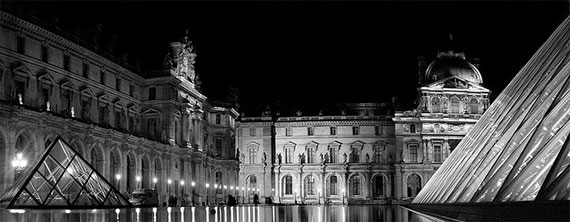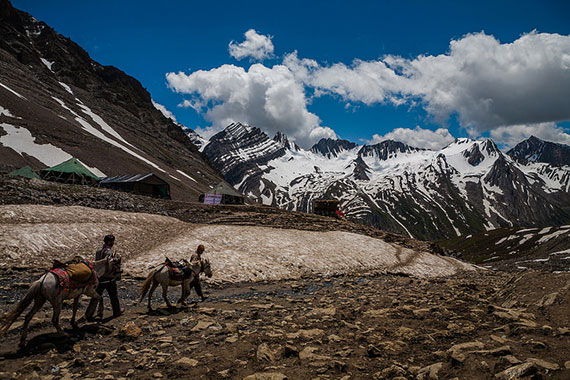One of the most frustrating experiences for a photographer is to get home from a photo trip with some great images only to find that some of the images are not sharp. To help solve this problem, this article covers seven things that a photographer can do to create really sharp images.

Photo by Matus Kalisky
Tripod
When it comes to getting sharp images, the first place to start is with a tripod. A tripod provides a stable platform that holds the camera rigid — dramatically increasing the sharpness of the image.
Weighting the tripod
A tripod is a good start. However, a tripod can be made even more stable by using some object to weigh down the tripod. This produces even sharper images. This is so important that many tripods have some type of mechanism at the bottom of the center post that was designed for hanging objects to add weight to the tripod.
A simple way to take advantage of this feature is to carry a small net bag with your photo equipment. The bag can be filled with rocks, or other materials, and attached to the tripod. Even if a tripod doesn’t have such a mechanism, other methods can be used such as hanging a camera bag from the center column of the tripod.
Shutter release
Just because a camera is on a tripod doesn’t mean that the camera will be steady. The simple act of pressing the shutter can cause vibrations that will cause a loss of sharpness. The solution is simple. A remote switch can be used to release the shutter. A remote switch is a device that attaches to the camera through a cable, or wirelessly, and allows the photographer to release the shutter without touching the camera.
Mirror lock up
This applies if you have a DSLR camera. Even if the camera is set up on a tripod, the tripod is weighted down, and a remote switch is used, image quality can still be degraded due to vibration from the movement of the camera’s mirror when the shutter is released. This vibration is primarily a problem with shutter speeds between about 1/30s and 1s.

Photo by sandeepachetan.com travel; ISO 100, f/7.1, 1/1250-second exposure.
This is easily solved by enabling the mirror lockup function on the camera. Once enabled, pressing the shutter button once swings the mirror out of the way. Pressing the shutter button a second time releases the shutter. This way, the mirror vibration dies out before the shutter is released.
Lens Quality:
Generally speaking, prime lenses can produce sharper results than zoom lenses. Quality of glass and manufacturing can also be a factor.
Aperture
The middle apertures (around f/8 for most lenses) produce the sharpest images. The larger apertures produce softer images due to various aberrations while the smaller apertures produce softer images due to diffraction.
Shutter Speed
While a tripod eliminates camera movement, the subject that is being photographed may be moving. Thus, a shutter speed that is high enough to freeze the subject movement should be used. This may require that a larger aperture be used in order to get the proper exposure
ISO
Increasing the ISO will allow a higher shutter speed to be used in order to stop the movement of the subject. However the higher the ISO, the more noise will appear in the image.

Photo by Don Harder; ISO 3200, f/5.0, 1/1250-second exposure.
Following these techniques will put you on your way to creating some really sharp photos.
About the Author:
Ron Bigelow (www.ronbigelow.com) has created an extensive resource of articles to help develop photography skills.
Like This Article?
Don't Miss The Next One!
Join over 100,000 photographers of all experience levels who receive our free photography tips and articles to stay current:






Not all DSLR’s are old fashion and not able to take tack-sharp photos ! My 5 year old Nikon takes them every time, even with kit-lenses… One just have to know how to work the equipment ! :-)
What mirror lock up? You must have one of those old fashioned DSLR cameras. I love how the author just assumes that you are using and old Canon or Nikon. Other tips are nice.
Hmmm! Not a word about the quality of lenses needed!
There is no mention of lens quality as one of the means for “Tack Sharp.” If one shoots with a kit lens, they are not getting the high-quality glass to acquire such sharpness. If one has a nice Schneider or Zeiss lens, then we are headed in the right direction. Personally, I use a Schneider 80mm f/2.8 Planar T* off the Hassy, converted for the Canon EOS 7D, and employ all of the articles suggestions. Now we’re talking REAL “Tack Sharp.”
Wow, thanks alot I didn’t know about that mirror lock out feature.
Another good thing to remember is a lens with image stabilisation.
Okay article. I say, these can be the tips for blur free images. Some points are missing like the focusing modes (AI servo, AI focus, ONE shot) These points mentioned in this articles will prevent blur. But it does not guarantee sharp images. And I don’t see the point of choosing narrow apertures for getting sharp images. It kind of implies that images taken with wide apertures will not be sharp. I agree that narrow images give large depth of field, but it doesn’t mean that one will get sharp images.
from the comment I read the tips is good but the important is focus.
To capture really sharp photos, the techniques discussed above is very useful. I think, every photographer should abide the rules.
Thank for nice post.
Having already judged 12 photography competitions, I know that every year thousands upon thousands of avid photographers enter various digital photography contests across the globe. While each of these contests may vary in theme, number of applicants and popularity, they all have one underlying characteristic in common, and that is that each of them will have their winners and their losers.
Great shots. Thanks for sharing.
^yeah he didnt think of that, hes just referring to faster shutter speed due to higher iso
also most important thing for sharp pictures wasnt mentioned at all: FOCUS!!
if focused on the wrong spot, best tripod wont help
I don’t understand. You’re talking about “very sharp pictures”… and as I learned, when we increase the ISO, we can’t avoid grain on the image. Large aperture will blur the background. To get a very sharp image throughout (like the one captured by fady), how can it be possible ?
Thanks,